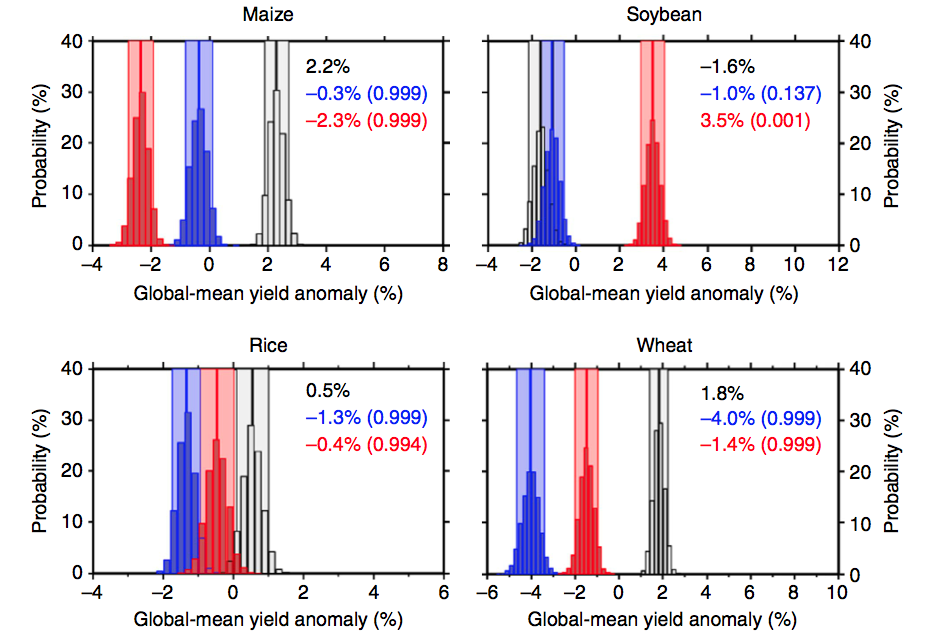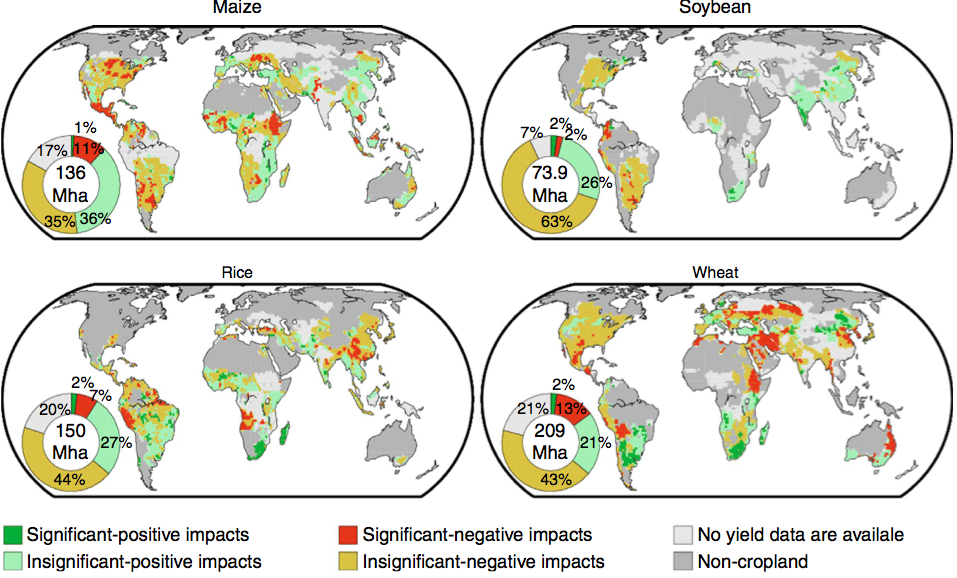Something fierce is rising out of the Pacific Ocean, and its appetite for the world’s major carb crops could be even more ravenous than that of a monstrous mythical sea creature. But this is a monster with some benevolence. The expected arrival of El Niño in the coming months could be a boon for protein-heavy vegetarian diets, with boosted worldwide soy yields.
A dinosaurian belch of warm water thousands of miles wide has appeared at the surface of the Pacific Ocean near the equator. The warming ocean conditions have spurred NOAA to project a two-thirds chance that an El Niño will form by summer’s end. It’s tipped to be of the monster variety—the extreme type that could become more common with global warming. Because the planet has warmed since the last extreme El Niño, some 17 years ago, there are fears that these warm waters could herald record-shattering extreme weather and temperatures.
For a sense of the type of havoc that extreme El Niños can wreak, think back to the late 1990s, or to the early 1980s, when widespread flooding and droughts plagued every inhabited continent.
For a sense of the type of havoc that extreme El Niños can wreak, think back to the late 1990s, or to the early 1980s, when widespread flooding and droughts plagued every inhabited continent, bleaching corals, ravaging wildlife, and killing tens of thousands of people. And as you mull over those disturbing memories of yore, chew on a sandwich—and savor it, for the weather that’s forecast to strike us could make that bread harder to get.
Scientists analyzed United Nations Food and Agriculture Organization maps showing where major crops are grown—wheat, soy, rice, and corn, which provide 60 percent of the world’s cropland-derived calories. They compared those maps with 20 years worth of weather observations. Then they factored regional growing seasons into their analysis to forecast how El Niño, La Niña, and the current nothing phase that lies between them (sometimes called La Nada) could affect growing conditions during the three months that precede each crop’s harvest.
Overall, the researchers discovered that yields could rise from about a third of harvested areas worldwide during the coming El Niño, most notably on soybean fields, mostly because of heavier rainfall and cooler temperatures. They found that between a fifth and a quarter of harvested areas worldwide could see yields fall, largely due to hot and dry conditions expected in those places. Corn, wheat, and rice yields are all expected to fall overall. Farmers that will be hit the hardest include wheat and corn growers in parts of the United States.
In the following chart from the new paper, published Thursday in Nature Communications, yields of the major crops during El Niño compared with La Nada (gray) are shown in red. La Niña findings are shown in blue.

(Chart: Nature Communications)
Here’s a map showing the modeled impacts of El Niño on croplands around the world, compared with La Nada years:

(Map: Nature Communications)
And here’s the map of projected La Niña impacts:

(Map: Nature Communications)





